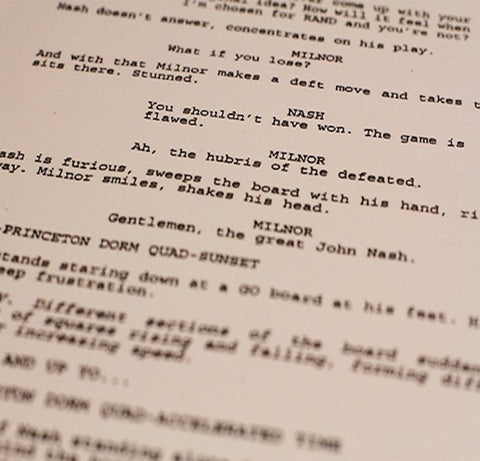
CASE STUDY: Compelling Writing for Actors in COUNTERPART
Non-spoiler alert – you don’t need to have seen Starz’s acclaimed series COUNTERPART, which just premiered its second season recently on December 9th, to read this article. The show is a great example of writing roles that challenge your actors.
JK Simmons plays two parts, Howard Silk and Howard Prime (Howard Silk’s doppelganger from a parallel dimension). Howard Silk is kind, self-effacing, responsible, and openly loving, especially towards his wife, whom he reads to every night in the hospital (where she’s in a coma). Howard Prime is arrogant, demanding, selfish, and has alienated his wife and daughter in the Prime dimension.
What’s the lesson here? Should we all write screenplays featuring identical twins? No. The most interesting part of the show is how both men also express similarities to each other, and how their different traits are benefits or drawbacks, depending on the situation.
For example, in an early episode, Howard Prime doesn’t give the hospital nurse a flower on the way in to see Howard Silk’s wife. That error tips off an assassin, who has been studying Howard Silk’s routine. But then we’ll also see Howard Prime refuse to take any crap at Howard Silk’s work (which Howard Silk definitely has). When a supervisor belittles him, Howard Prime simply walks out.
The concept of the show also hints at the similarities between the men. They both married the same woman. In a scene where Howard Silk visits Howard Prime’s wife in the Prime dimension, he’s charming and they seem to rekindle a spark.
Howard Silk, at the start of the series, has been passed over for a promotion after many years working at the same company. Had he gotten that promotion, and worked in a more vital part of the intelligence world he’s in, might he have grown jaded like Howard Prime? It seems fair to consider that he could have.
For screenwriters, the lesson here might be to write your characters as both Howard Silk and Howard Prime, showing how one person can have multiple layers. This will make your characters three-dimensional, and more appealing to actors.
How do you approach writing complex roles for actors?
JK Simmons plays two parts, Howard Silk and Howard Prime (Howard Silk’s doppelganger from a parallel dimension). Howard Silk is kind, self-effacing, responsible, and openly loving, especially towards his wife, whom he reads to every night in the hospital (where she’s in a coma). Howard Prime is arrogant, demanding, selfish, and has alienated his wife and daughter in the Prime dimension.
What’s the lesson here? Should we all write screenplays featuring identical twins? No. The most interesting part of the show is how both men also express similarities to each other, and how their different traits are benefits or drawbacks, depending on the situation.
For example, in an early episode, Howard Prime doesn’t give the hospital nurse a flower on the way in to see Howard Silk’s wife. That error tips off an assassin, who has been studying Howard Silk’s routine. But then we’ll also see Howard Prime refuse to take any crap at Howard Silk’s work (which Howard Silk definitely has). When a supervisor belittles him, Howard Prime simply walks out.
The concept of the show also hints at the similarities between the men. They both married the same woman. In a scene where Howard Silk visits Howard Prime’s wife in the Prime dimension, he’s charming and they seem to rekindle a spark.
Howard Silk, at the start of the series, has been passed over for a promotion after many years working at the same company. Had he gotten that promotion, and worked in a more vital part of the intelligence world he’s in, might he have grown jaded like Howard Prime? It seems fair to consider that he could have.
For screenwriters, the lesson here might be to write your characters as both Howard Silk and Howard Prime, showing how one person can have multiple layers. This will make your characters three-dimensional, and more appealing to actors.
How do you approach writing complex roles for actors?




